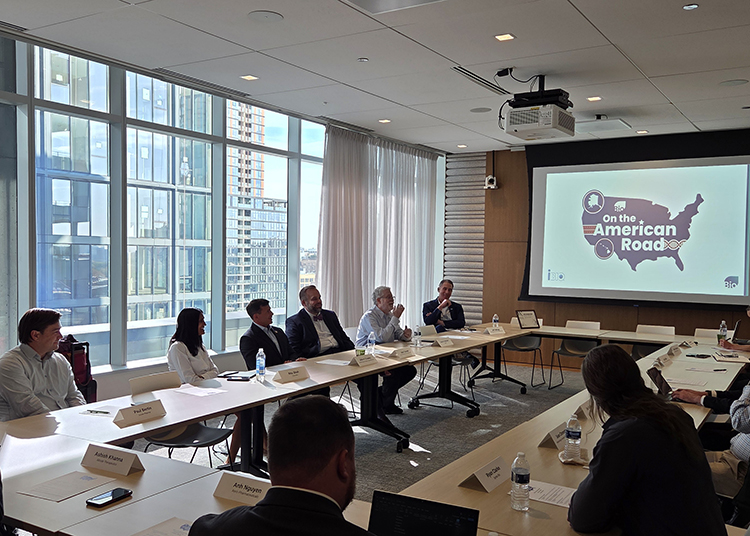It has been three years since the Inflation Reduction Act (IRA) was signed into law. “We have definitively seen negative impacts on patient access, and I know many patient groups are really trying to look at what’s ahead as the law’s implementation continues to move forward,” explained Karin Hoelzer, Senior Director of Patient Advocacy at the Biotechnology Innovation Organization (BIO) August Coffee Chat, “Three Years In: Patient Access and the IRA.”
Patient advocates have been tracking the IRA’s implementation closely. As Sue Peschin, MHS, President and CEO of the Alliance for Aging Research stated: “We have dug into the Inflation Reduction Act and its various iterations since before the law was passed, as well as after the law was passed, because there are a lot of impacts to Medicare.”
Some of the key IRA implementation concerns for many in the patient advocacy community: ensure patients can benefit from the new annual caps on out-of-pocket costs in Medicare Part D plans – and have a voice when it comes to drug price “negotiations.” Another big worry: that the IRA creates additional access barriers for patients, for instance, health insurance plans tightening drug formularies and increasing utilization management, or fewer pharmacies and infusion centers being able to afford stocking “negotiated” drugs.
As Brian Nyquist, MPH, President and CEO of the National Infusion Center Association reminded the audience: “Availability and access are not the same thing.”
When it comes to IRA implementation and patient access, the details really matter
For example, as Peschin explained, “There are some aspects of the IRA that are very good, in that it created the first ever cap on out-of-pocket costs in Part D, and it created a new benefit for beneficiaries to be able to smooth out the existing out-of-pocket costs that they have in Part D—depending on if they reach a certain threshold of cost.” But, while the bill’s “smoothing” provision, formally called “Medicare Prescription Payment Program” was an element that patient advocates broadly supported, its implementation has so far been less than easy to navigate.
Since the IRA was signed into law, Peschin and other advocates have met repeatedly with the Centers for Medicare & Medicaid Services (CMS). Yet, “CMS has not really done a lot to promote the program,” explained Peschin. She continues: “CMS also didn’t take all of the feedback that a number of patient advocacy groups gave asking to allow patients to sign up to the program where you get your medications at the pharmacy counter. So instead, folks need to call their insurance company 24 hours before they initiate the smoothing program, and if they don’t do it, they can’t take advantage of it.”
Keeping drugs on the formulary
As Peschin explains, the IRA’s broader changes to the Part D benefit design create incentives for health insurance plans to narrow their drug formularies and increase prior authorization and utilization management. This clearly threatens patient access. “It sounds great on the surface,” Peschin noted, “but it has really been much more about saving money for the Medicare program than it has been for saving money for Medicare beneficiaries.”
In fact, an unsettling trend is emerging: out-of-pocket costs for the “negotiated” drugs are rising while formularies are becoming increasingly restrictive and utilization management is trending up. “Already, we are beginning to hear that there are some formulary access challenges that certain drugs are not on formulary,” said Daneen Sekoni, Vice President of Policy and Advocacy at the Cancer Support Community.
Access challenges go far beyond formulary design. Oncology is a “protected class”—meaning that by law, Medicare must cover substantially all drugs on the formulary. However, as Sekoni explains, “While those drugs are covered, there is a high prevalence of prior authorization to get access to those drugs.” “In addition to that, we’re also seeing that some Medicare Advantage plans have limited some of their networks and aren’t necessarily including providers at academic medical centers, which may be more likely to prescribe newer treatment options. And so, some cancer patients may have to make the choice of, do I keep my doctor, or do I keep access to the drug?”
And this choice is by no means simple. Switching providers disrupts care, and in particular for rural, elderly, or chronically and acutely sick patients, can be dangerous.
“My concern with really any access threat is that if patients can’t get their medication, what are they going to do?” asked Nyquist. “And when we’re talking about biologic medicines for complex chronic conditions, patients are going to pivot from wellness management with a medical-benefit drug and little to no other health care service consumption, to a state of disease flare management in the most expensive care settings with increased reliance on health care.”
The Alliance for Aging Research last year commissioned a report to determine how CMS can best protect beneficiaries from such threats. “The recommendations included things like a public watch list for specific adverse formulary decisions that CMS won’t approve, to keep the drug plan sponsors from narrowing their formularies,” said Peschin. “We wanted CMS to commit additional resources to doing these types of formulary reviews before they start to harm beneficiaries. We wanted them to publicly identify where plans have to cover more than two drugs per category or class to ensure that the formularies have adequate options for patients, especially the ones that have been selected and ones that are most commonly used, which are a lot of the selected medications under the Medicare negotiation program. We also wanted to make sure that the drugs that were selected for negotiation be given preferred formulary status.”
Unfortunately, Peschin adds, CMS has to date not enacted many of these recommendations. But patient advocates are not giving up. “We recently got some report language into appropriations on the Senate side to push them along a little bit more to have Congress give them a directive to allow for some positive changes,” Peschin said.
IRA-related access barriers are expected to get much worse next year
“One thing a lot of people are worried about is something called IRA effectuation,” explained Peschin. When the first “negotiated” pricing goes into effect next January, pharmacies may find themselves in a tough spot: their acquisition costs for “negotiated” drugs may exceed CMS reimbursement levels for drugs disbursed to Medicare patients, and the associated manufacturer refunds may not be seamlessly processed. “Pharmacies, in particular community pharmacies, have really expressed worry that CMS has not done nearly enough to make sure that this is going to be a seamless process, either for pharmacies or for beneficiaries and patients.”
Community pharmacies are particularly exposed to the financial risks—and may not stock the drugs. In fact, Peschin explained, the National Community Pharmacists Association conducted a survey in January 2025, “where 61% of independent pharmacists said that they’re strongly considering not stocking one or more drugs with the prices that were negotiated under Medicare Part D, and an additional 33% have already decided not to stock one or more of the drugs. The reason why is they haven’t figured out how to solve the cash flow problems and payment delays related to this implementation process.” This would translate into substantial access barriers for seniors, particularly in rural areas.
IRA-related access barriers will also impact patients at the doctor’s office
It is not just at the pharmacy that the unintended consequences of the IRA are manifesting. As Nyquist explained, physician-administered infusion and injection drugs (aka Part B drugs), which are often therapies for cancer, autoimmune diseases, and other complex chronic conditions, will be “negotiation” eligible starting next year, but are already feeling the burden of government price controls.
“If the government sets a price so low that providers can’t cover their costs to purchase and administer those drugs,” Nyquist noted, “they simply won’t be able to offer them to their communities, and when that happens, patients lose.”
Nyquist reflected, “Think about it; your mother, battling cancer, may not be able to get her infusion in her community clinic anymore. Instead, she’ll be pushed into a hospital outpatient department, which is less convenient, often harder to access, and the most expensive site of care in the system.”
Ironically, Nyquist observed, a policy meant to make drugs more affordable could actually drive up costs while making access harder—and the ripple effects are serious.
“It could disrupt the fragile biosimilar market. It could chill innovation. And it puts community infusion centers at risk of closure,” he said. “At the end of the day, patients need the right drug at the right time in the right setting. Lower prices on paper doesn’t mean much if the real-world result is patients being cut off from their therapies that they need.”
As Nyquist explained, infusion providers generally acquire medications under what’s called the buy and bill model.
“They purchase the drug, they maintain inventory, and then they administer that drug,” he said. “So because they take ownership of the drug, there are two components to their total reimbursement: there’s a payment for the drug, and then there’s a payment for the professional services to furnish that particular medication.”
The challenge on the professional service payment side, Nyquist explained, is that providers are already grossly underwater and very much undercompensated for the total cost to coordinate care for these patients. As a result, they are reliant on drug payment to offset losses on the professional service payment to maintain the economic viability of providing these services to their community. And, exactly how much providers are reimbursed for administering the drug is typically calculated as a percentage of the overall price of the drug, further exacerbating the threat.
“What the IRA will do is essentially significantly reduce those drug payments—that sole lever that infusion providers have, again, to offset losses on the professional service side and make delivery of those medications selected for negotiation and price setting financially viable to continue supporting,” Nyquist said.
And as Part B drugs become subject to government price setting, with the first Part B drug selection for “negotiation” starting in 2026, access concerns extend far beyond Medicare. “Medicare sets the tone for commercial insurance; those government-set prices will spill over quickly across the entire payer mix,” said Nyquist. “That means infusion providers can be underwater across all payers, and patients who have been stable on their medications for years may be forced to switch or face delays or loss of access altogether.”
The Protecting Patient Access to Cancer and Complex Therapies Act
So, what are patient advocates proposing? Luckily, there is legislation to help address the issue, as Nyquist explained: The Protecting Patient Access to Cancer and Complex Therapies Act.
This bill is a commonsense fix. “It would preserve the current provider reimbursement methodology, insulating providers from the effects of government price setting,” Nyquist explained. “Essentially, manufacturers would still pay the government the difference, but providers wouldn’t be left holding the bag. So that means patients would continue to have access to their therapies in community settings, and providers could stay viable.”
“In terms of some concrete action you can take now, reach out to your elected officials and the policymakers you have relationships with and ask them to support this commonsense legislative fix. “ explained Nyquist. For anyone who wants to learn more, NICA has a policy brief on The Protecting Patient Access to Cancer and Complex Therapies Act.
The EPIC Act
Sekoni highlighted another important way to mitigate the harmful impacts of the IRA on patient access. For the oncology community, Sekoni explained, “We’re beginning to see a lot more treatment alternatives being available as a small molecule drug in the pill form, which we have also found is what our patients prefer because it is easier and they don’t have to travel to an infusion center.”
But currently, under the IRA “Biologics get 13 years before they can be subject to “negotiation,” and small molecule drugs get 11 years; that is an unnecessary disincentive,” explained Sekoni.
The result: a chilling of the small molecule drug development market that has been a special focus for patient advocates since the passing of the IRA. This is why they have been pushing the Ensuring Pathways to Innovative Cures (EPIC) Act, which would increase the negotiation period for a small molecule drug.
“What the EPIC Act does is equalize small molecule and biologic drugs; it sets both at 13 years following FDA approval before they are eligible for the drug price negotiation program. That is why we support the EPIC Act, because we’re always front and center about making sure patients have as much access as they can to treatments and alternatives.”
Peschin further emphasized the need for passing the EPIC Act soon. “There was a recent report from the Information Technology and Innovation Foundation, which found that small molecule drug investment has dropped 70% since the IRA was first drafted,” she said. “And there was a survey of drug manufacturers that found that 78% reported they expected to cancel their early stage pipeline projects due to this discrepancy.” The EPIC Act is an easy fix, Peschin added, noting that advocacy groups are hoping to add it to end-of-year legislation.
For anyone wanting to learn more about the EPIC act, the Alliance for Aging Research has created a policy brief and is co-leading a sign-on letter with the Global Coalition on Aging (GCOA) urging swift passage of this legislation.
Both pieces of legislation are “common sense” the participants explained. “It’s about making policy patient-centered,” said Nyquist. That is why engagement from the patient advocacy community is so vital.
See a full list of BIO Coffee Chats here.




